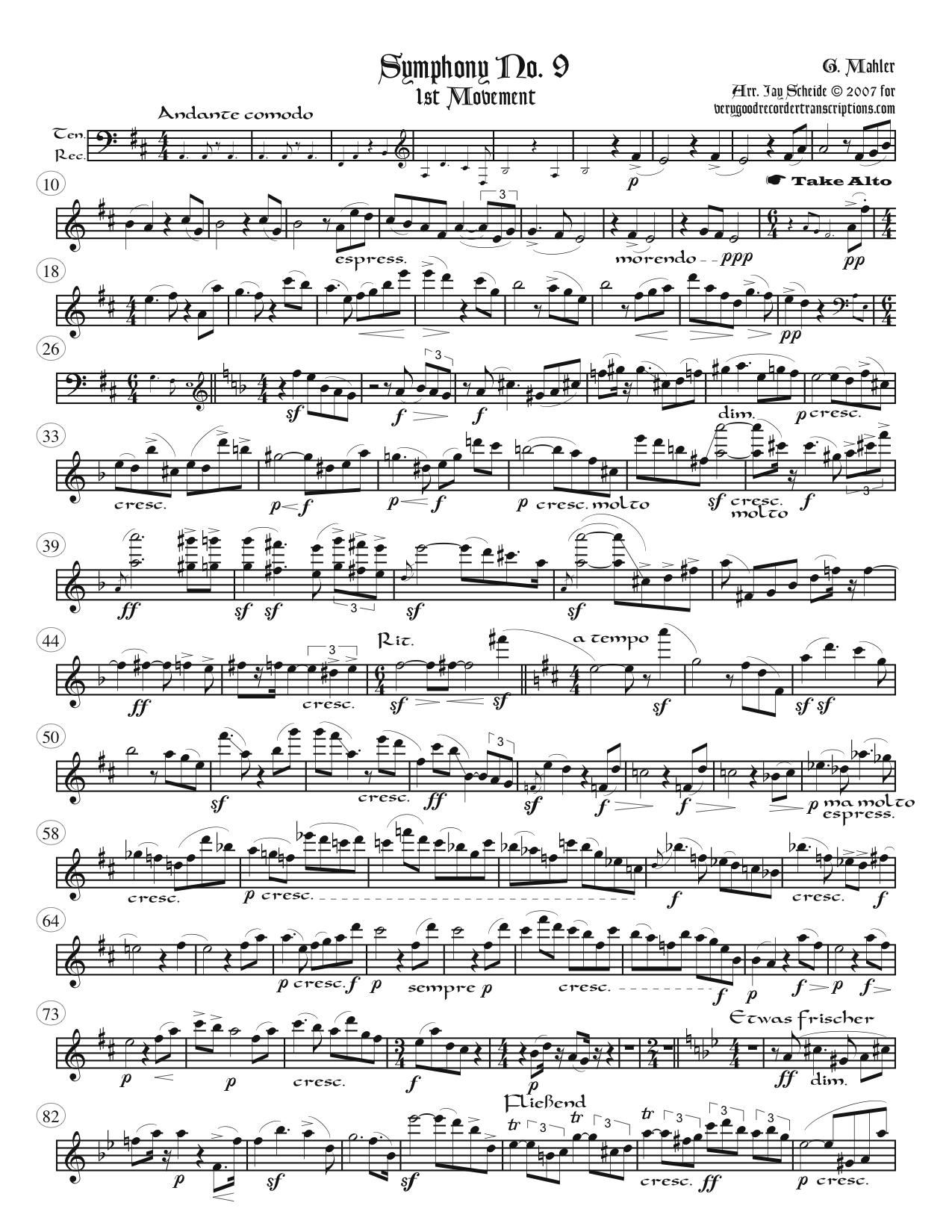Symphony No. 9 complete, requiring switches between S, A, T, B, & Sopranino recorders
from: G. Mahler (1860-1911)
The first movement requires switching between SATB recorders, the second is for alto with a brief switch to tenor, the third is for alto only, and the fourth uses the full panoply of SATB and sopranino. Options for notes beyond recorders' normal ranges are plentiful, and access to modern recorders such as Mollenhauers and Moeck Ehlerts is highly recommended. These arrangements of symphonies, of Mahler in particular, are especially for folks who know the movements from which they are taken, so that the context can come to mind while playing—but they will also be great at introducing people to these works. They keep very close to the original register, but may profitably be run through in at least three different ways: 1. using just one recorder, changing between F and C fingering, 2. going through with each required size, 1st playing all the soprano sections, then alto, etc., or 3. switching as indicated in the scores. T. W. Adorno said, [Mahler had] “the desire to fill the empty flows of time with meaning, to transform it into a permanence full of joy. That fulfilment…has found its true home in Mahler’s…symphonies.”(1) The original dynamics, slurs and articulations are indicated, but of course there is a limit to how faithfully a recorder can perform them, especially the dynamics. They are included mainly so that the composer's original intent is transmitted, and the best possible recorderistic solution found. (1) Quasi una Fantasia, p. 89.
Mahler9CompleteRecPts
20 pp.
$1.00

